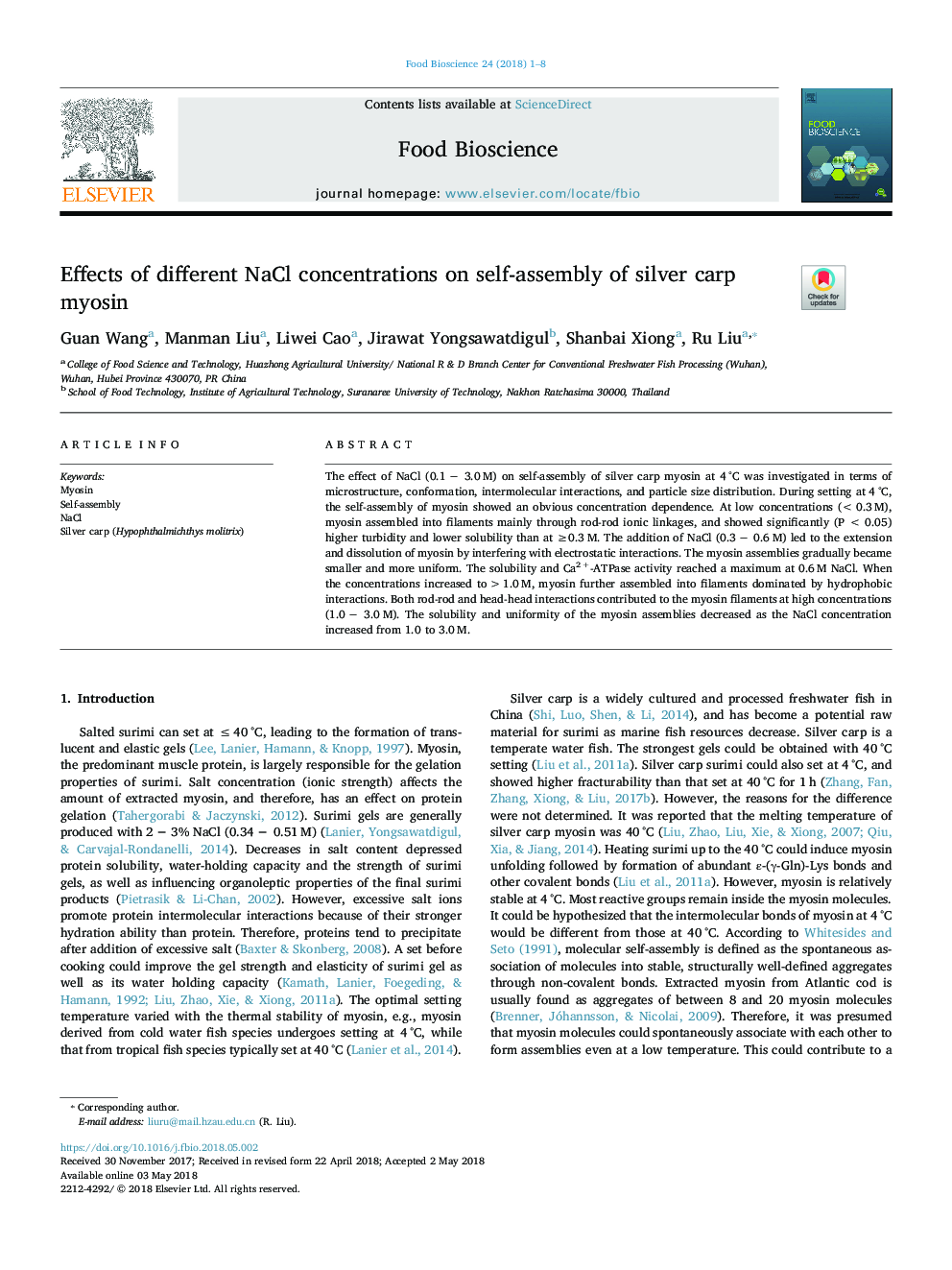| Article ID | Journal | Published Year | Pages | File Type |
|---|---|---|---|---|
| 6488736 | Food Bioscience | 2018 | 8 Pages |
Abstract
The effect of NaCl (0.1â¯â 3.0â¯M) on self-assembly of silver carp myosin at 4â¯Â°C was investigated in terms of microstructure, conformation, intermolecular interactions, and particle size distribution. During setting at 4â¯Â°C, the self-assembly of myosin showed an obvious concentration dependence. At low concentrations (<0.3â¯M), myosin assembled into filaments mainly through rod-rod ionic linkages, and showed significantly (Pâ¯<â¯0.05) higher turbidity and lower solubility than at â¥0.3â¯M. The addition of NaCl (0.3â¯â 0.6â¯M) led to the extension and dissolution of myosin by interfering with electrostatic interactions. The myosin assemblies gradually became smaller and more uniform. The solubility and Ca2+-ATPase activity reached a maximum at 0.6â¯M NaCl. When the concentrations increased to >1.0â¯M, myosin further assembled into filaments dominated by hydrophobic interactions. Both rod-rod and head-head interactions contributed to the myosin filaments at high concentrations (1.0â¯â 3.0â¯M). The solubility and uniformity of the myosin assemblies decreased as the NaCl concentration increased from 1.0 to 3.0â¯M.
Related Topics
Physical Sciences and Engineering
Chemical Engineering
Bioengineering
Authors
Guan Wang, Manman Liu, Liwei Cao, Jirawat Yongsawatdigul, Shanbai Xiong, Ru Liu,
